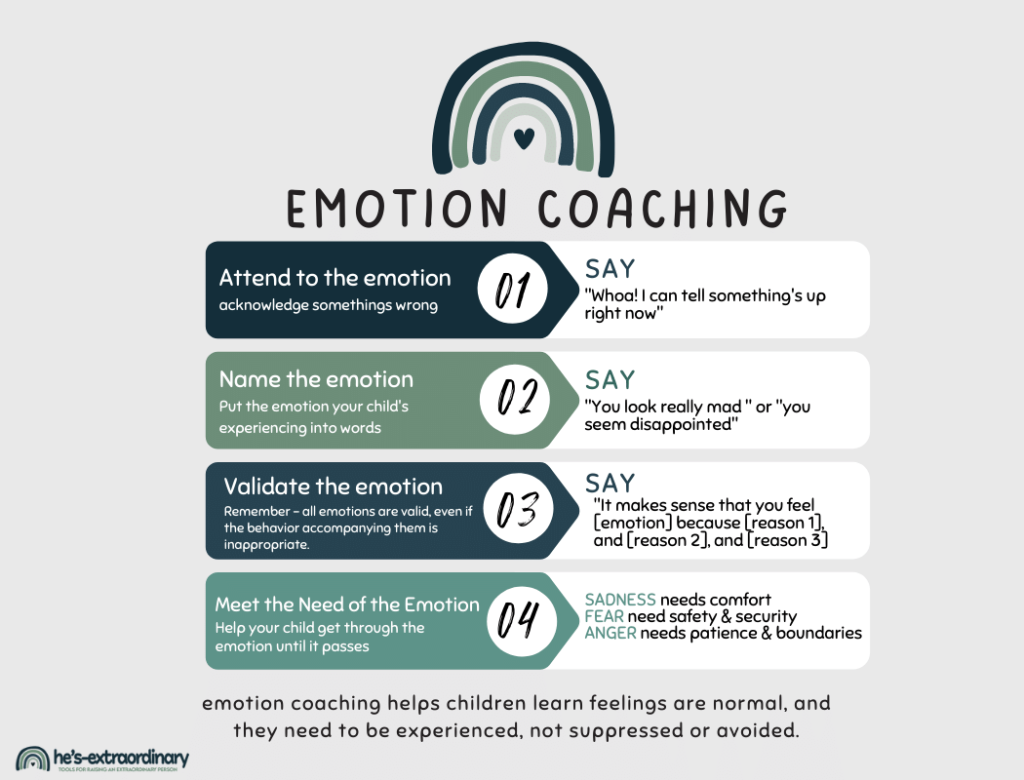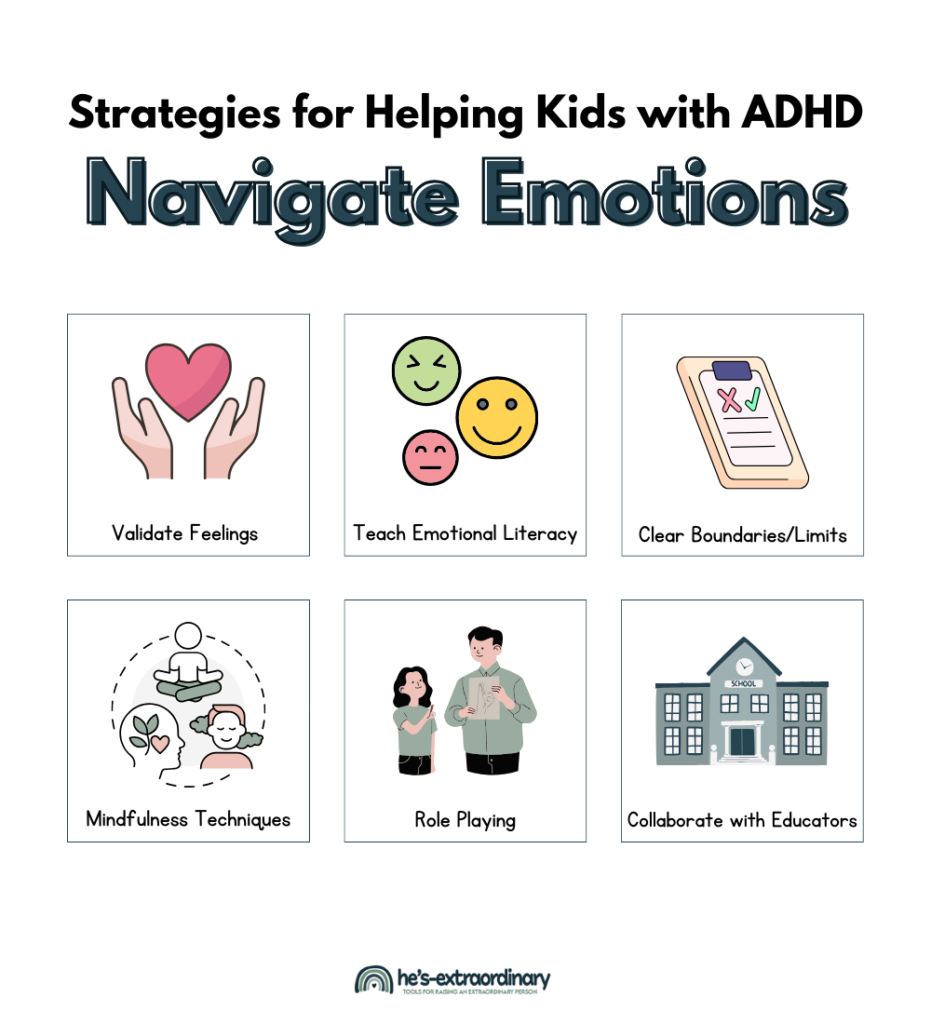How ADHD Affects Emotions: Your Child’s Intense Reactions Explained
What’s inside this article: A look at how ADHD affects emotions and why your child’s emotional responses are often so intense. Plus, effective research-based strategies to help your child navigate their emotions.
When parents and educators think about ADHD, they often visualize a hyperactive, impulsive child who struggles to pay attention in class.
However, another dimension often goes unnoticed: the frequent emotional roller-coasters many of these kids experience.
ADHD affects not just attention and activity levels but also emotions.
Emotional Development in Children with ADHD
Children with ADHD often experience their emotions more intensely than their peers. Dr. Russell Barkley, a leading ADHD expert, when asked how ADHD affects emotions, remarked that kids with ADHD show “lower frustration tolerance, impatience, quickness to anger, and greater emotional reactivity.”
This isn’t because they’re trying to be difficult; it’s how their brains are wired.
Why is there such a disparity?
- Rapid Fire Emotions: Children with ADHD often quickly shift from one emotion to another. They might laugh one minute and cry the next, leaving parents and teachers perplexed.
- Intensity: The emotions of ADHD kids are often turned up a few notches. What’s considered a minor disappointment to their peers may lead to an intense outburst.
- Recognition of Emotions: Sometimes, children with ADHD struggle to recognize and understand their emotions, making it hard for them to make sense of and communicate what they’re feeling.
The Challenge of Self-Regulation
Self-regulation is the ability to manage behaviors, emotions, and thoughts, adapting them according to the situation.
Many children with ADHD struggle with self-regulation, especially regarding emotions.
Here’s why:
- Impulsivity: A hallmark of ADHD, impulsivity means that they often act on their emotions before they think. This can lead to actions they regret later.
- Delayed Social-Emotional Development: Often, children with ADHD lag behind their peers in terms of social-emotional development. While their friends might be developing skills to handle conflicts or frustrations, children with ADHD might still be learning the basics. This lag leads to situations where they feel out of sync with their peers, leading to potential misunderstandings and feelings of isolation.
- Executive Dysfunction: Central to ADHD is the concept of executive dysfunction, which affects skills like planning, organization, and time management. This can make it harder for children with ADHD to anticipate future events, sequence tasks, or recognize potential pitfalls. When it comes to emotions, this means they might struggle with foreseeing the consequences of their emotional reactions, leading to difficulties in self-regulating.
- Problem-Solving Difficulties: Tied into executive dysfunction is the challenge of problem-solving. A child without ADHD might feel upset but can often brainstorm a few potential ways to handle that emotion. In contrast, a child with ADHD might feel stuck, overwhelmed by the emotion, and unsure of how to proceed.
All these challenges can make the world seem unpredictable and overwhelming for a child with ADHD. It’s essential to recognize these struggles not as intentional defiance or carelessness but as integral aspects of their condition.
With the right support, understanding, and interventions, these children can learn to navigate their emotions and self-regulation challenges more effectively.
Effective Strategies for Helping Kids with ADHD Navigate Emotions
Navigating emotions is no small feat, especially for kids who often experience heightened emotional responses.
Thankfully, research offers many strategies parents and educators can implement to help kids with ADHD manage their emotions.
Validate Their Feelings
Emotions can be confusing and overwhelming, especially for a child with ADHD. Imagine a whirlwind of feelings, each more intense than the last, with little understanding of why they occur. The first step in helping is to validate those feelings.
What Validation Means:
It’s more than just saying, “I understand.” It’s showing genuine empathy and acknowledging their emotional experience without judgment.
As Dr. L. Greenberg points out, validation creates a safe environment for children to process and understand their emotions, making them feel valued and heard.
One effective way to validate emotions is through emotion coaching, a step-by-step validation strategy used in emotion-focused family therapy (EFFT). Learn more about it here.

Benefits of Validation: When children feel understood, they’re more likely to open up about their emotions, discuss them, and be receptive to guidance. This foundation of trust can be invaluable in teaching them coping mechanisms.
Teach Emotional Literacy
Before managing emotions, children need to recognize and name them.
This is where emotional literacy comes in. Emotional literacy is the ability to recognize, understand, express, and manage emotions, as well as the ability to identify and respond appropriately to the emotions of others.
Tools for Teaching:
- How Do I Feel? Emotions Booklet: 24-page booklet designed to help children learn about different feelings and understand their feelings better. Includes various coloring, matching, drawing, and cut-and-paste activities to reinforce learning concepts.
- Mood Charts: Visual tools where children can point to or mark the emotion they’re feeling. Over time, this helps them associate feelings with names.
- Emotion Flashcards: Cards with faces depicting different emotions. Kids can sort through them, choosing the one that best represents their current mood.
- The Zones of Regulation: a complete social-emotional learning curriculum created to teach children self-regulation and emotional control.
- Understanding & Coping with Emotions Mega Bundle: printable activities, worksheets, and visual supports that cover a wide range of emotional literacy concepts, including identifying, understanding, and coping with emotions.
- Books about Emotions: the brain activity that occurs when we read fiction is very similar to experiencing that situation in real life. This means reading about a situation or concept helps children work out how to solve it in reality. Check out this list of books about emotions for kids.
Benefits: Children can more easily communicate their feelings with increased emotional literacy. This clarity can reduce misunderstandings and improve their relationships with peers and adults.

Breathing and Mindfulness Techniques
The bridge between feeling an emotion and acting on it can be very short for children with ADHD. Mindfulness acts as a buffer, lengthening that bridge.
Examples:
- Deep Breathing: Encourage kids to take slow, deep breaths when they’re feeling overwhelmed. This simple act can calm the nervous system.
- Guided Meditations: Many child-friendly apps and websites offer short, engaging meditations that help children center themselves.
Benefits: Over time, children can learn to automatically turn to these techniques when emotions run high, giving them greater control.
Set Clear Limits
While understanding and empathy are important, limit setting is equally vital.
Why Boundaries Matter: Boundaries help children understand that while their emotions are valid, there are appropriate and inappropriate ways to express them. It also helps them accurately predict consequences and develop self-control. This distinction is crucial for their social development.
Implementation: Consistency is vital. If a certain behavior is inappropriate today, it should be inappropriate tomorrow. Clear, consistent feedback helps children internalize these boundaries.

Role-Playing Scenarios
Practice makes perfect, and role-playing allows children to practice emotional responses.
How it Works: Create scenarios where children might experience strong emotions. Role-play these situations, discussing alternative responses and the consequences of each.
Benefits: By “rehearsing” these scenarios, children are better prepared to handle similar real-life situations.
Collaborate with Educators
School is a significant part of children’s lives, making the collaboration between parents and educators essential.
The Power of Consistency: When the strategies used at home are mirrored in school, children receive consistent feedback, reinforcing their learning.
Ways to Collaborate: Regular meetings, sharing resources, and open communication channels can ensure everyone is on the same page regarding the child’s emotional development.

Emotional journeys can be complex, especially for children with ADHD. But with a better understanding of how ADHD affects emotions, patience, and the strategies above, we can help these young individuals navigate their feelings, setting the stage for a brighter, more emotionally balanced future.
Embracing the Journey
If you have a child with ADHD, it might feel like they’re on a never-ending roller-coaster of emotions.
But with a deeper understanding of how ADHD affects emotions and the right tools, it’s possible to help them learn to navigate their emotions effectively.
The key is to remember that every child – ADHD or not – is unique. What works for one might not work for another. It’s a journey of understanding, patience, and continuous learning.
When we acknowledge and address the emotional dimension of ADHD, we’re not just helping children manage their feelings. We’re also setting the stage for them to grow into self-aware, empathetic, and resilient adults.

